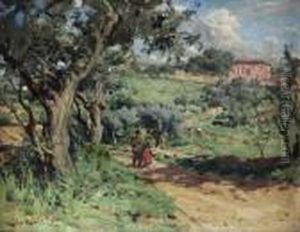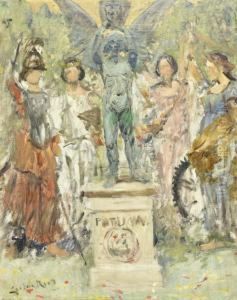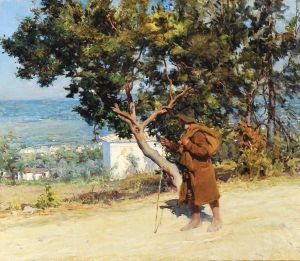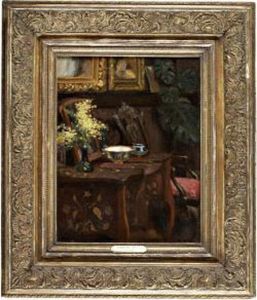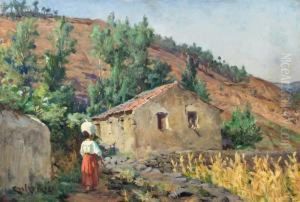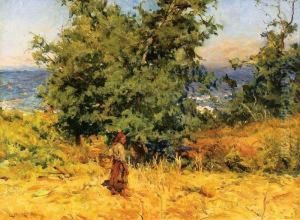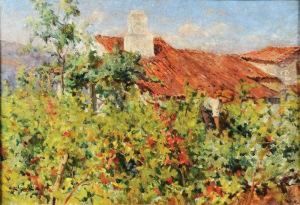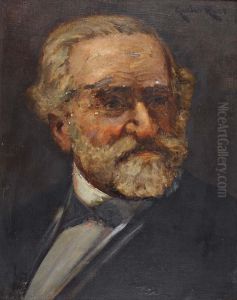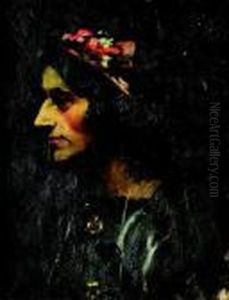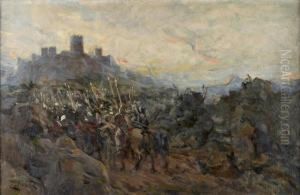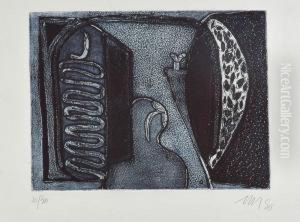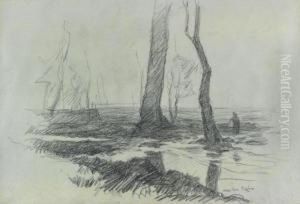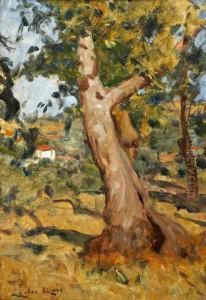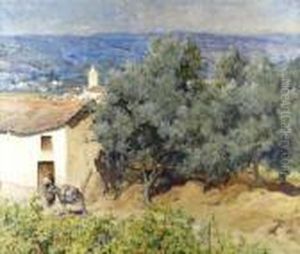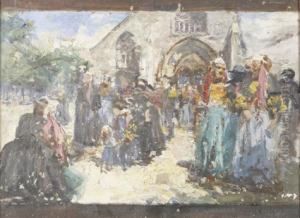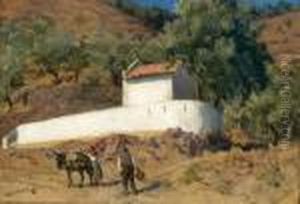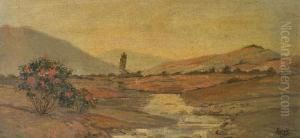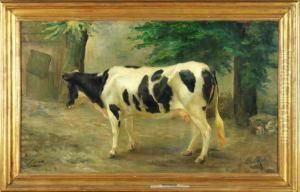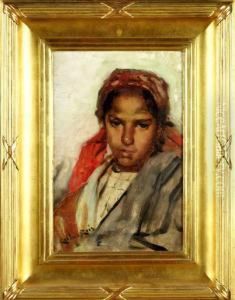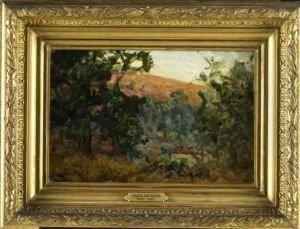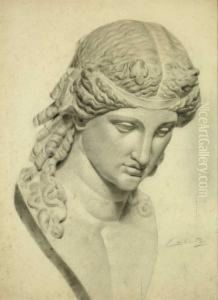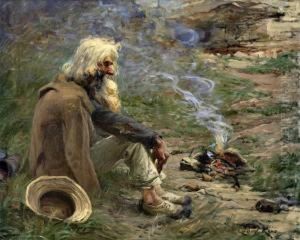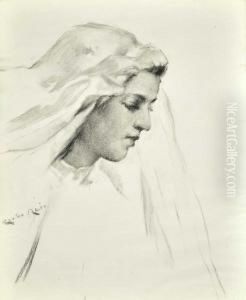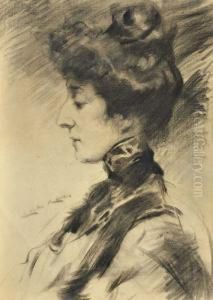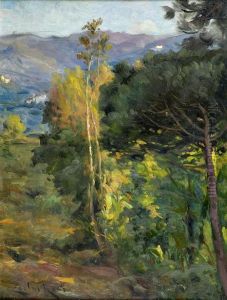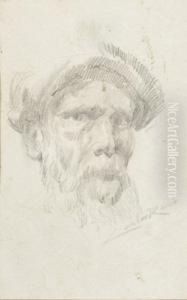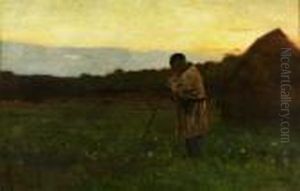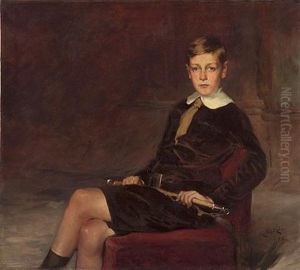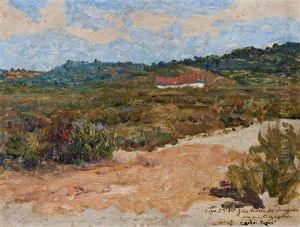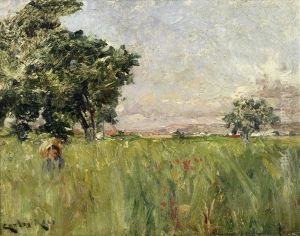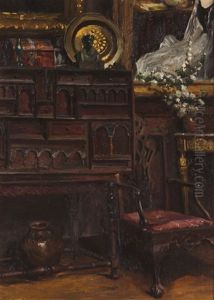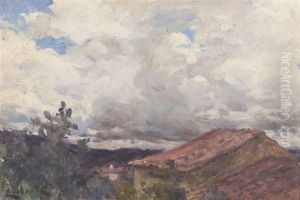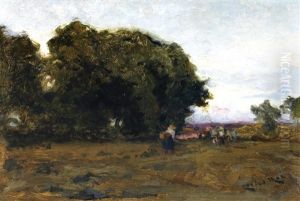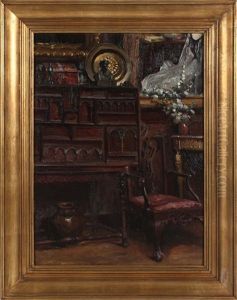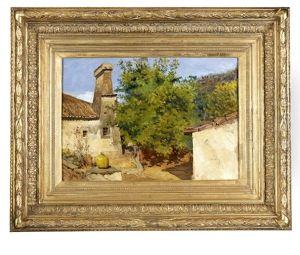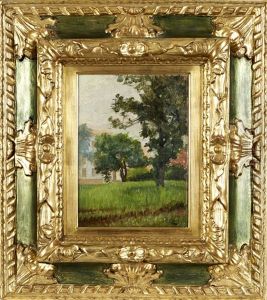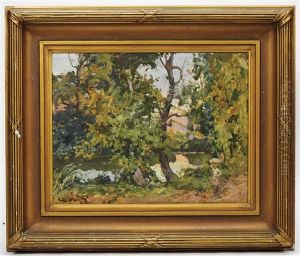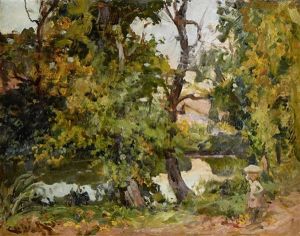Carlos Reis Paintings
Carlos Reis was a Portuguese painter, illustrator, and professor, known for his naturalistic approach and his role in advancing art education in Portugal. Born in Torres Novas, Portugal, in 1868, Reis showed an early interest in art. He pursued his passion for painting by studying at the Lisbon School of Fine Arts, where he honed his skills and became influenced by the Naturalism movement that was prevalent in Europe at the time.
After completing his studies, Reis traveled to Paris where he continued to develop his artistic style. His time in Paris exposed him to new artistic trends and techniques, which he absorbed and later incorporated into his own work. Upon returning to Portugal, Carlos Reis became a key figure in the Portuguese art scene. He was known for his landscape paintings that captured the serene beauty of the Portuguese countryside, often depicting rural scenes with a delicate and sensitive approach.
In addition to his painting, Reis was also an important illustrator, contributing to various publications and books, which helped disseminate his work and the naturalistic style he championed. His illustrations often featured the same attention to detail and realism found in his paintings.
Carlos Reis's contribution to Portuguese art was not limited to his own creative work. He was also a dedicated educator and became a professor at the Lisbon School of Fine Arts, where he had once been a student. In his role as an educator, he influenced a generation of Portuguese artists, instilling in them the principles of Naturalism and the importance of artistic technique.
Throughout his career, Reis exhibited his work in various venues, gaining recognition and acclaim for his artistic achievements. His paintings are part of several museum collections, and his legacy is remembered for its significant impact on the development of Portuguese art in the late 19th and early 20th centuries.
Carlos Reis passed away in 1917, but his influence on Portuguese art continued long after his death, with his teachings and artistic philosophy shaping the practices of future artists in Portugal.
